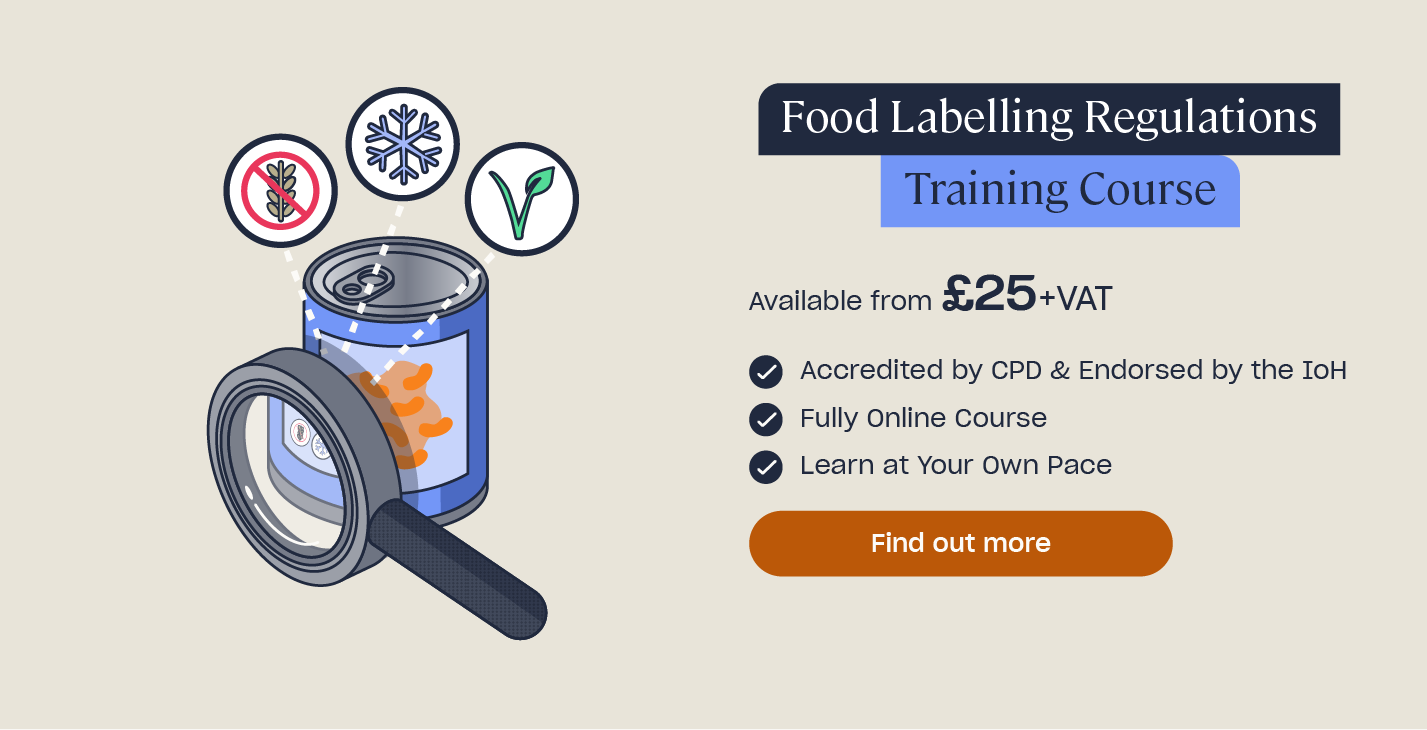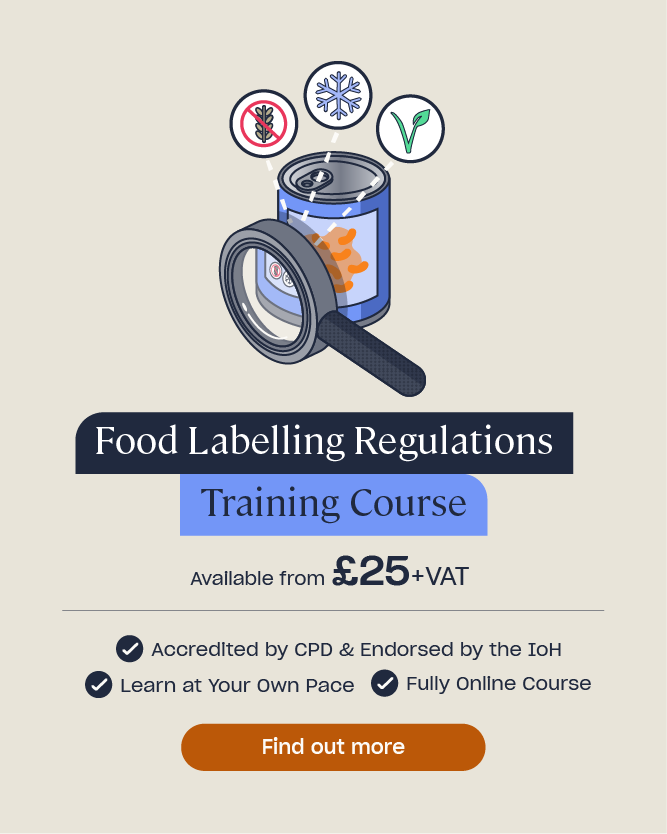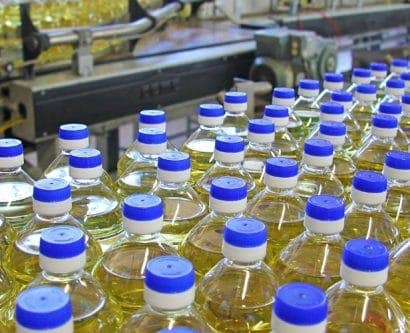How to Create an Ingredients List
All prepacked food requires a food label that displays certain mandatory information. Food manufacturers must comply with general food labelling requirements and the labels provided must be accurate and not misleading. A food label must contain an ingredients list if it contains two or more ingredients (including water and additives).
An ingredients list is an essential part of food labelling. It provides consumers with all of the necessary information regarding what is contained within a product by listing all of the ingredients used. This is especially important when it comes to food allergens, and by law, all allergenic ingredients must be declared on an ingredients list in order to protect consumers.
In this article, we will look at what an ingredients list is in detail and explain why they are so important in food manufacturing. We will also examine which products require an ingredients list, and provide guidance as to how you might go about creating an ingredients list.
What is a Food Ingredients List?
By law, manufacturers must comply with the food labelling regulations, and therefore must have a list of ingredients on their packaged food products.
An ingredients list helps to illustrate exactly what a food product contains. As with the mandatory nutritional information, an ingredients list is commonly found on the side or back of food packaging, and it contains a list of all the ingredients used in a product. These ingredients should be listed in descending order of weight at the mixing bowl stage of production, starting with the main ingredient.
A list of ingredients should have a heading consisting of, or including, the word ‘ingredients’. The ingredients refer to any substance, including additives, used in manufacture and still present in the finished product.

There are also additional labelling requirements for additives and water in food products:
- For additives – Certain ingredient names must be preceded by their function such as colours, thickeners and emulsifiers. Any individual ingredient greater than 2% of the finished product must be declared in descending weight order. Ingredients which are less than 2% of the finished product are usually grouped together at the end of the list, Regulation (EU) No 1169/2011, Article 18 – Annex VII, Part A – retained in UK law. For example: Raising Agents (Sodium Bicarbonate, Ammonium Bicarbonate, Disodium Diphosphonate). Some additives such as certain artificial colours require you to add a warning to the label ‘May have an adverse effect on activity and attention in children’. For more guidance on food additives legislation for the UK and EU, check out our article.
- For water – It must be declared as an ingredient if it makes up 5% or more of the finished product. However, this doesn’t apply to water that is intended to be drained away such as tuna in brine, or if water has been used to rehydrate a dried or powdered ingredient.
Need a Course?
For more information, take a look at our Food Labelling Regulations training course. It explains each of the food labelling requirements under the Food Information Regulations 2014 and FIC Regulations in detail, ensuring that you understand your legal requirements.
Why is an Ingredients List Important in Food Manufacturing?
As we’ve discussed, an ingredients list is a vital part of food labelling for manufacturers, and there are a number of reasons for this.
First of all, it is a legal requirement for food manufacturers to provide an ingredients list when a food product contains two or more ingredients.
In order to ensure that consumers can make an informed choice about the products they purchase, the law says that all food labels must be:
- Clear and easy to read.
- Permanent.
- Easy to understand.
- Easily visible.
- Not misleading.

Trust
Food products that are labelled accurately and display ingredient information clearly can be seen as more trustworthy to customers. One of the main aims of food labelling is to prevent food fraud from occurring – consumers want to be certain that what they’re buying is actually what they think it is, rather than being misled by false representation on packaging.
Quality
Consumers are aware that ingredients lists are in descending quantity order, they may use this information to compare similar products and make a judgement on the product quality and value for money.
Customers may also look for certain ingredients as a sign of quality – such as butter in a spread, or 100% beef burgers as opposed to burgers with cereal fillers. Some customers view the ingredients list to avoid particular ingredients, such as added sugars, or additives for health reasons. For more information on clean label packaging and food trends, click here.
Reputable Suppliers
Another reason for ensuring your food labels are up-to-date is because manufacturers and retailers look for reputable suppliers that have systems and processes in place to ensure all of their food labels are accurate when sourcing ingredients and products. For more information on reputable suppliers, check out our article, here.
Financial Cost
Both manufacturers and retailers could face high costs as a result of incorrect labelling. Food business operators not complying with food labelling law could be subject to large fines if found to be labelling their products incorrectly.
A retailer or manufacturer with incorrectly labelled products may also need to recall the product and dispose of it, these costs are often significant and are compounded by the loss in sales. Additionally, an incorrect label will require the label to be redesigned and changed (or over-stickered), on average this will set a business back several thousand pounds.

Food Allergens and Natasha’s Law
Another essential reason for having an ingredients list is to provide allergen information to consumers. It’s estimated that 2 million people in the UK have a diagnosed food allergy, and if someone consumes food that they’re allergic to, their reaction can range from mild rashes and swelling to a life-threatening shock in the body. With such serious consequences on the line, it’s clear why there are food safety and labelling laws in place.
By law, all food businesses must follow the allergen information guidance found in the EU Food for Consumers Regulation (EU FIC), written into The Food Information Regulations 2014. More information about these regulations can be found here.
If a food product contains any of the 14 named food allergens, this must be declared and emphasised within the ingredients list. Most manufacturers bold the allergenic ingredients, however emphasis can include capitalising and underlining.
The 14 named allergens are:
- Celery.
- Cereals containing gluten.
- Crustaceans.
- Eggs.
- Fish.
- Lupin.
- Molluscs.
- Milk.
- Mustard.
- Nuts.
- Peanuts.
- Sesame.
- Soya.
- Sulphur dioxide and sulphites.
You can find a free downloadable poster of the 14 named food allergens in our article, here. You can also test your knowledge with our Food Allergens in Manufacturing Quiz.

As of October 2021, Natasha’s Law has come into effect, which requires food businesses to include full ingredients labelling on all prepacked for direct sale (PPDS) foods. Natasha’s law means that foods prepared, packed and sold on the same premises – for example, a packed on site sandwich or salad – must carry an allergen label.
Businesses must also include ‘may contain’ allergens in the ingredients list – for example, if they cannot be certain of avoiding any cross-contamination from any of the named allergens. An allergen risk assessment should be completed to identify cross-contact allergens from the factory lines and from the ingredients themselves. You can find a free allergen risk assessment template and checklist, here. The allergen profile of an ingredient should also be considered when sourcing to reduce the number of cross-contact allergens in a product.
For more information on Natasha’s Law, take a look at our article: ‘What Does Natasha’s Law Mean for My Business?’
Need a Course?
Our Food Allergens in Manufacturing course provides information about the foods that commonly trigger allergic reactions and how these should be displayed on food packaging. It also explains which procedures and practices must be followed to prevent contamination between allergenic and non-allergenic ingredients in manufacturing premises. For food handlers in a catering or retail environment, we offer Food Allergen Awareness Training.
Cereals Containing Gluten
People who must avoid products that contain gluten also often rely heavily on the ingredients label to tell them which ingredients contain gluten. Gluten is not listed explicitly as an allergen on a product label in the UK, but needs to be in the form of the gluten-containing ingredient itself. The most common is wheat, barley or rye.
For example, the label on bread might say wheat flour, water, yeast, salt. The emphasised word indicates which ingredient contains the allergen. For more information on the ingredients that contain gluten and how to label products correctly, check out our article: ‘How to Identify Which Foods Contain Gluten’.

Which Products Require an Ingredients List?
As previously mentioned, an ingredients list is required by law when a food product contains more than two ingredients. However, there are also food and drink products that are exempt from the requirement, and therefore do not need to have an ingredients list.
Examples include:
- Whole unpeeled vegetables such as potatoes.
- Uncut fruits.
- Carbonated water, if described as carbonated.
- Milk and butter with no added ingredients other than those needed to make them.
- Products with just one ingredient, such as herbs and spices.
- Drinks with an alcoholic strength greater than 1.2%.
Constituents that are not required in an ingredients list, include:
- Components of an ingredient that, during product manufacture, were temporarily isolated but then reintroduced in their original proportions. For example, if egg yolk and egg white were used separately in a product, they could be declared as ‘egg’.
- Non-functional carryover additives and enzymes.
- Processing aids, such as additives, enzymes and other substances.
- Carriers for additives, enzymes, flavourings and nutrients.
- Water that is used and absorbed during a process, such as in reconstituting concentrated or dried ingredients.
Ingredients List Examples
As previously discussed, an ingredients list needs to contain everything contained in a food product, listed in descending order of weight at the mixing bowl stage of production, starting with the main ingredient. However, there are also other components to consider.
Compound Ingredients
A compound ingredient is an ingredient that is itself the product of more than one ingredient, such as breadcrumbs. All the components of the compound ingredient must be declared in brackets immediately after the compound ingredient appears in the ingredient list. For example – Vegetable Oils (Coconut, Palm).
Fats and oils must be defined as from animal or vegetable origin and any hydrogenated fats or oils must be declared separately.
Quantitative Ingredient Declaration (QUID)
The quantity of a named or implied ingredient must be declared. The Quantitative Ingredient Declaration (QUID) is given in brackets immediately after the ingredient appears in the ingredient list or in the name of the food. This provides further information to customers and will likely influence the perceived quality of the product, as well as allowing the customer to make a more informed decision when comparing two similar products.
The quantity of an ingredient must be provided if:
- A specific ingredient appears in the name of the food, for example: tomato purée (57%).
- An ingredient is emphasised on the packaging through words, pictures or graphics, for example: pineapple juice (9%), passionfruit juice (3.9%), mango puree (1.7%).
- The ingredient is commonly associated with the food by consumers, for example: a Spaghetti Bolognese ready meal would declare Beef (22%).

The image above shows the ingredients list for a Chicken Chargrill product (marinated, seared and glazed chicken chunks). The quantity of the chicken must be declared as it is in the name of the product. Wheat flour and starch are compound ingredients and are declared in brackets immediately after the compound ingredient. This brand has chosen to bold and capitalise the allergenic ingredients in order to emphasise them, wheat is emphasised as it is a cereal containing gluten. The additive soya lecithin is preceded by its additive function ‘natural emulsifier’.
This product also has additional information about the ingredients for the consumer to learn about what lecithin is used for and why a 100% chicken breast declaration can be labelled in the ingredients as 75%.
PPDS ingredients lists do not require QUID within it, with the exception of meat products. The Food Standards Agency provides guidance on PPDS labelling for butchers.
The ingredients within your product also dictate whether you are required to add a warning to the label. As previously mentioned, some artificial colours can cause hyperactivity in children and the label therefore must contain this warning. Further examples of ingredients that require a warning include aspartame, raw milk and liquorice.
We hope you’ve found this article on how to create an ingredients list both informative and helpful. If you have any questions, or need further information, please don’t hesitate to get in touch with us at High Speed Training!
Further Resources
- Food Labelling Regulations
- Food Allergen Awareness
- Food Allergens in Manufacturing
- Vegan Food Products: What are the Labelling Requirements?
- Why is Food Labelling Important?











